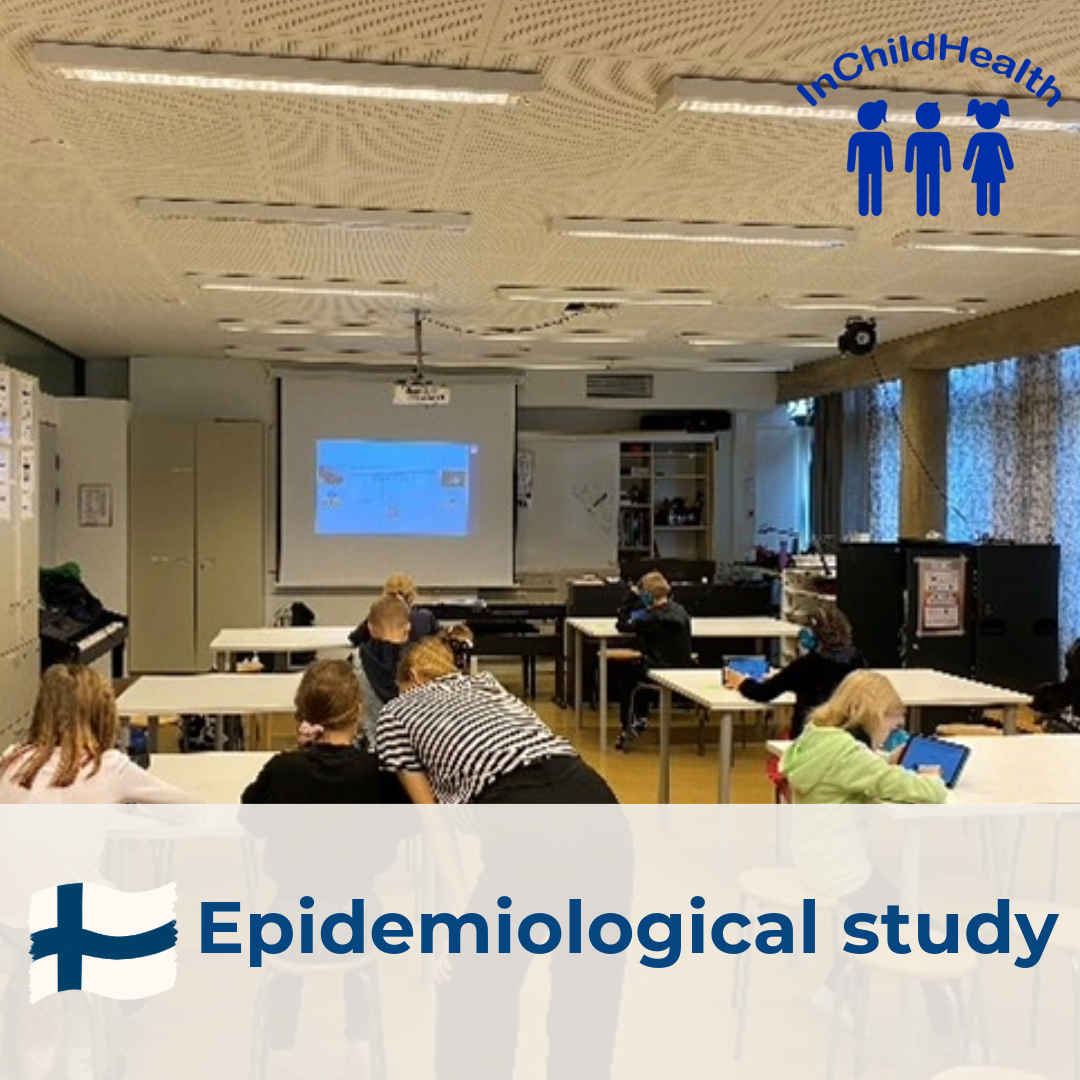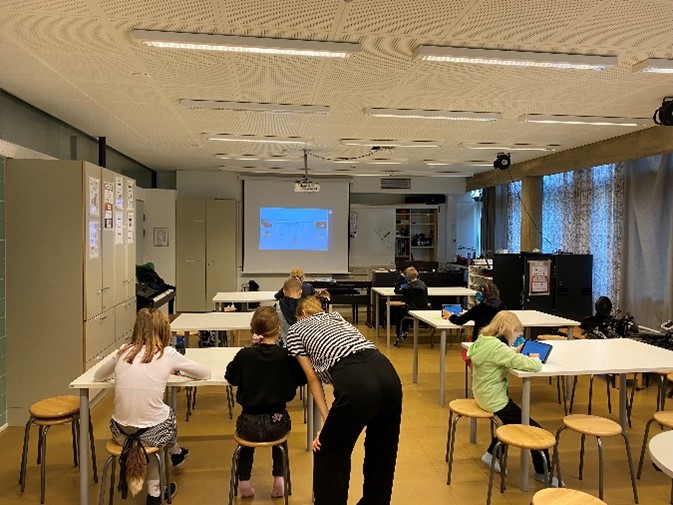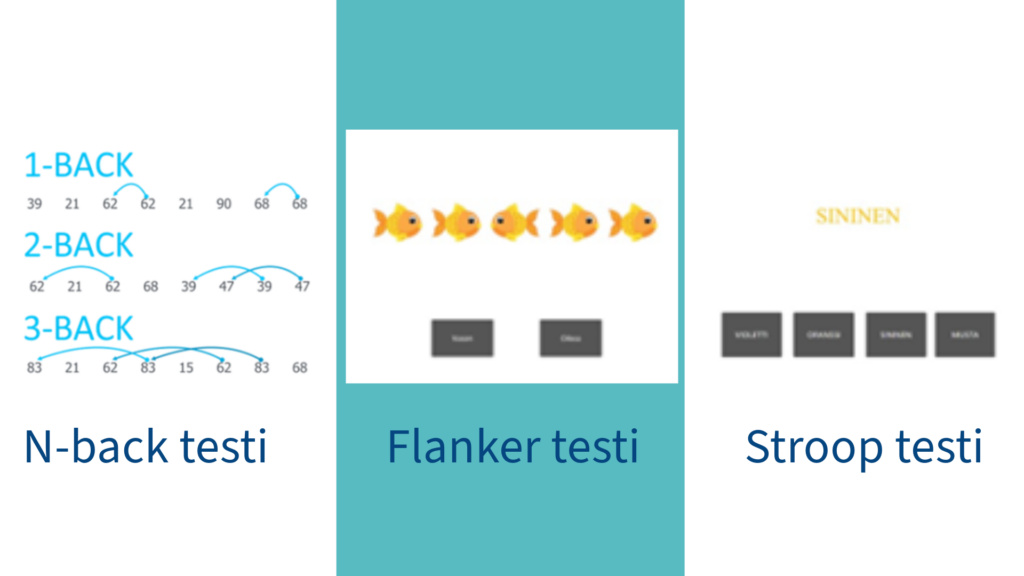
In English (Suomeksi klikkaa täStä)
What kind of air do children breathe at school and how does it affect their learning outcomes? Classrooms are sometimes crowded, too warm or too cold and poorly ventilated, or have high levels of pollutants originating both from inside the school and outside. All these can result in possible memory disturbances, lack of concentration, and deficit of attention. Previous evidence suggests that children in classrooms with good indoor air quality tend to achieve higher scores on standardized tests in math and reading than children in poorly ventilated classrooms (1,2).
Some of the children in the InChildHealth study participate in cognitive tests where they complete the memory and learning games on a tablet during school hours under the guidance of our researchers (Figure 1).

The standardized and validated cognitive tests assess working memory, attentional function, processing speed, and ability to inhibit cognitive interference. Specifically, working memory is evaluated through the N-back test, attention function through the Flanker test and processing speed and ability to inhibit cognitive interference through the Stroop test (Figure 2). These validated tests are administered through the web-based GORILLA platform. The tests are conducted once in the autumn and once in the spring, because the conditions of the school environment vary in different seasons.
The results from these tests will be used to assess the impact of indoor air quality on children’s cognitive performance, and to create recommendations on how to improve children’s learning environments.

Suomeksi
Millaista ilmaa lapset hengittävät kouluissa ja miten se vaikuttaa heidän muistiinsa ja oppimiseen? Luokkahuoneissa on ajoittain ahdasta, liian kuuma tai kylmä, riittämätön ilmanvaihto ja luokkien ilma voi sisältää epäpuhtauksia Nämä kaikki voivat vaikuttaa muistiin, keskittymiseen, oppimiseen ja jaksamiseen koulussa. Aiempien tutkimuksien perusteella luokkahuoneen hyvä sisäilman laatu on yhteydessä lasten korkeampiin pisteisiin standardoiduissa matematiikan ja lukemisen kokeissa (1,2).
Osa InChildHealth-tutkimuksessa mukana olevista lapsista osallistuu kognitiivisiin testeihin, joissa lapset tekevät muisti- ja oppimispelejä tableteilla koulupäivän aikana tutkijoidemme ohjauksessa (Kuva 1).

Standardoidut ja validoidut kognitiiviset testit arvioivat työmuistia, keskittymiskykyä ja reaktionopeutta. Työmuistia arvioidaan N-back-testillä, tarkkaavaisuutta Flanker-testillä ja reaktionopeutta ja keskittymiskykyä Stroop-testillä (Kuva 2). Testit toteutetaan verkkopohjaisen GORILLA-alustan kautta. Testit toteutetaan kerran syksyllä ja kerran keväällä, koska kouluympäristön olosuhteet vaihtelevat eri vuodenaikoina.
Näiden testien tuloksia käytetään arvioitaessa sisäilman laadun vaikutusta lasten kognitiiviseen suorituskykyyn sekä laadittaessa suosituksia kouluympäristöjen laadun parantamiseksi.

References / Lähteet:
- Haverinen-Shaughnessy U, Shaughnessy RJ (2015) Effects of Classroom Ventilation Rate and Temperature on Students’ Test Scores. PLoS ONE 10(8): e0136165. https://doi.org/10.1371/journal.pone.0136165
- Sadrizadeh S et al. (2022) Indoor air quality and health in schools: A critical review for developing the roadmap for the future school environment. Journal of Building Engineering 57: 104908. https://doi.org/10.1016/j.jobe.2022.104908
